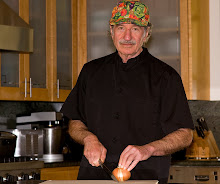August 11, 2009
How to Rein in Medical Costs, RIGHT NOW
By GEORGE LUNDBERG
I believe that there are still many ethical and professional American physicians and many intelligent American patients who are capable of, in an alliance of patients and physicians, doing "the right things". Their combined clout is being underestimated in the current healthcare reform debate.
Efforts to control American medical costs date from at least 1932. With few exceptions, they have failed. Health care reform, 2009 politics-style, is again in trouble over cost control. It would be such a shame if we once again fail to cover the uninsured because of hang-ups over costs.
Physician decisions drive the majority of expenditures in the US health care system. American health care costs will never be controlled until most physicians are no longer paid fees for specific services. The lure of economic incentives to provide unnecessary or unproven care, or even that known to be ineffective, drives many physicians to make the lucrative choice.
Hospitals and especially academic medical centers are also motivated to profit from many expensive procedures. Alternative payment forms used in integrated multispecialty delivery systems such as those at Geisinger, Mayo, and Kaiser Permanente are far more efficient and effective.
Fee-for-service incentives are a key reason why at least 30% of the $2.5 trillion expended annually for American health care is unnecessary. Eliminating that waste could save $750 billion annually with no harm to patient outcomes.
Currently several House and Senate bills include various proposals to lower costs. But they are tepid at best, in danger of being bought out by special interests at worst.
So, what can we in the USA do RIGHT NOW to begin to cut health care costs?
An alliance of informed patients and physicians can widely apply recently learned comparative effectiveness science to big ticket items, saving vast sums while improving quality of care.
Intensive medical therapy should be substituted for coronary artery bypass grafting (currently around 500,000 procedures annually) for many patients with established coronary artery disease, saving many billions of dollars annually.
The same for invasive angioplasty and stenting (currently around 1,000,000 procedures per year) saving tens of billions of dollars annually.
Most non-indicated PSA screening for prostate cancer should be stopped. Radical surgery as the usual treatment for most prostate cancers should cease since it causes more harm than good. Billions saved here.
Screening mammography in women under 50 who have no clinical indication should be stopped and for those over 50 sharply curtailed, since it now seems to lead to at least as much harm as good. More billions saved.
CAT scans and MRIs are impressive art forms and can be useful clinically. However, their use is unnecessary much of the time to guide correct therapeutic decisions. Such expensive diagnostic tests should not be paid for on a case by case basis but grouped along with other diagnostic tests, by some capitated or packaged method that is use-neutral. More billions saved.
We must stop paying huge sums to clinical oncologists and their institutions for administering chemotherapeutic false hope, along with real suffering from adverse effects, to patients with widespread metastatic cancer. More billions saved.
Death, which comes to us all, should be as dignified and free from pain and suffering as possible. We should stop paying physicians and institutions to prolong dying with false hope, bravado, and intensive therapy which only adds to their profit margin. Such behavior is almost unthinkable and yet is commonplace. More billions saved.
Why might many physicians, their patients and their institutions suddenly now change these established behaviors? Patriotism, recognition of new science, stewardship, and the economic survival of the America we love. No legislation is necessary to effect these huge savings. Physicians, patients, and their institutions need only take a good hard look in the mirror and then follow the medical science that most benefits patients and the public health at lowest cost. Academic medical centers should take the lead, rather than continuing to teach new doctors to "take the money and run".
Physicians can re-affirm their professionalism and patients their rights, with sound ethical behavior without undue concern for meeting revenue needs. The interests of the patients and the public must again supersede the self interest of the learned professional.
George D. Lundberg MD, is former Editor in Chief of Medscape, eMedicine, and the Journal of the American Medical Association. He's now President and Chair of the Board of
The Lundberg Institute



